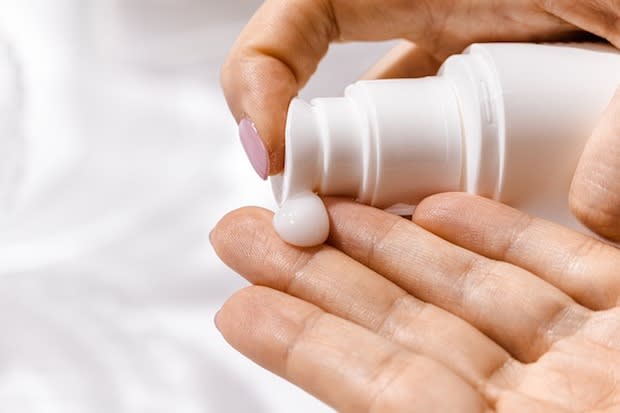Table of Contents
III. Don’t Share Towels or Combs
V. Stay Away From Animals with Fungal Infections
VI. Take Medications as Prescribed
Fungi 101
Fungal skin infections affect millions of people across the world. At any given time, 20 to 25 percent of the world’s population is affected by these conditions. Fungal skin infections are typically not serious but are unpleasant and bothersome to those affected. Fungi live all around us so people can be affected at any time. Around half of fungi are harmful to the body and can cause an infection.
People are more likely to develop these infections if they have a compromised immune system, pre-existing conditions like diabetes, or are undergoing chemotherapy. These conditions make it more likely for fungus to develop in the body's moist areas, which are perfect breeding grounds for fungal growth. The groin, inner thighs, armpits, and area between the toes are the most common areas for a fungal skin infection to appear.
Athlete’s foot, jock itch, ringworm, and yeast infections are common fungal skin infections. Because these problems are so common, medications like Lotriderm cream (clotrimazole/betamethasone), Vermox (mebendazole), Spectazole (econazole), Diflucan (fluconazole), and Oxistat cream (oxiconazole) are available for symptom relief. In most cases, these infections can be avoided if the proper steps are taken. Read on to learn more. [1] Fungal skin infections like jock itch and athlete’s foot got their name because of their common presence in sports-related activities. Most sports involve a team locker room or meeting place where athletes dress and shower, which can become the perfect environment for fungi to spread. Any situation that combines dampness with a lot of foot traffic can lead to fungal infections. If you can, wear shower shoes when walking around these areas to prevent direct contact with the floor or other contaminated surfaces. You may also want to wash your feet with soap and water once a day. Keep the feet as dry as possible. Wearing clean socks every day and changing them when wet can also help you prevent athlete’s foot. [2] If you want to avoid all sorts of fungal skin infections, you should avoid sharing personal items when possible. Fungal infections are contagious and are usually passed from person to person through contaminated items. If you are in a group environment, you should have your own towels, combs, hats, and shoes to avoid passing fungi around. If you share a comb with others, you may develop scalp ringworm. This is an unpleasant condition that may create a red-ringed bald spot on the head. If you do share a comb, disinfect it using a sanitizer before using it yourself. To avoid reinfecting yourself, you should wash all clothes, towels, and bedding regularly. [3] Showering after a workout is a good habit to start for many reasons. If you sweat during physical exertion, you will want to change out of your athletic clothes as soon as possible. Many of us skip this step, but it can prevent the formation of fungal and bacterial growth. If you don’t cleanse your skin, you are at risk of suffering from clogged pores and bacterial overgrowth. If you don’t wash your skin and workout gear often, you are at an increased risk of athlete’s foot and yeast infections on the skin. These rashes can become very irritated, especially if you do not increase your hygiene practices. [4] If you have an animal that lives in your house, you have to be wary of your animal’s hygiene as much as your own. Dogs can develop similar fungal skin infections to humans, including ringworm and yeast infections of the skin (yeast dermatitis). This step sounds easy enough, but how do you know if a dog or cat is suffering from a fungal infection? Many animals scratch their bodies regularly, so it may be difficult for owners to determine infections versus dry skin or flea bites. Pet owners should look out for the following signs of fungal infections in their animals: If you notice these unusual symptoms in your pet, you should take them to the vet as soon as possible to prevent spreading fungal skin infections to humans or other pets in the house. Once diagnosed, your veterinarian can develop a custom treatment plan and provide your dog with the proper antifungal drugs or antifungal baths. [5] In most cases, the above tips can prevent the development of fungal skin infections. Some over-the-counter medications can clear up a fungal rash, but if your infection is left for a long time, it may become more severe. In this circumstance, you will have to see a doctor to receive prescription-strength drugs like Lotriderm cream (clotrimazole/betamethasone), Vermox (mebendazole), Spectazole (econazole), Diflucan (fluconazole), or Oxistat cream (oxiconazole). Your fungal infection will usually clear up fairly quickly with the proper application of your fungal cream or pills, but it is essential to take the full cycle of your prescription. Do not stop earlier or later than advised by your doctor; otherwise, your infection may come back even if the rash has gone away. Talk to your doctor if you believe you are experiencing a fungal skin infection. [6] The content in this article is intended for informational purposes only. This website does not provide medical advice. In all circumstances, you should always seek the advice of your physician and/or other qualified health professionals(s) for drug, medical condition, or treatment advice. The content provided on this website is not a substitute for professional medical advice, diagnosis, or treatment.
Be Wary of Locker Rooms
Don’t Share Towels or Combs

Shower After Working Out
Stay Away From Animals with Fungal Infections

Take Medications as Prescribed
